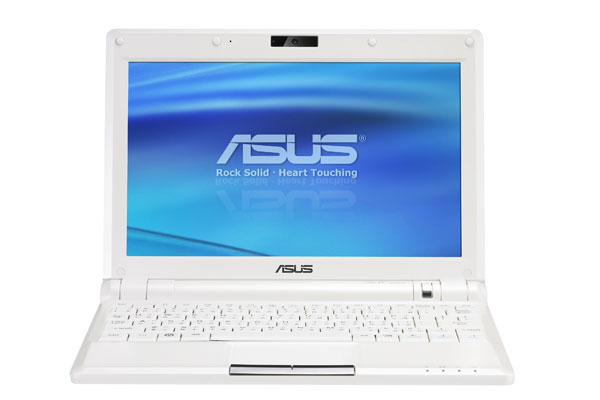First Look : Asus Eee PC 900
We take a quick look at the latest budget laptop from Asus - the Eee PC 900.

Asus has improved the already good Eee PC, enhancing the screen size and resolution, increasing storage and adding effective multi- touch technology. If you want an affordable ultra portable for your workforce, this is it.

Click here for our Quick Take video on the Eee PC.
What it was released last year, the Asus Eee PC redefined what a laptop could be. With its less is more approach, in terms of both size and cost, it showed that a cool laptop is no longer defined just by how expensive it is but by what it can offer - low cost chic, if you will.
With the Eee PC shipping more than a million units so far, it's no surprise that competitors have been queuing up to get a piece of the budget laptop action. HP has announced its Mini-note effort, Elonex has made some 100 laptop noises, and earlier this month we even spotted prototype Atom based machines from MSI at IDF in Shanghai.
However, Asus is capitalising the momentum it has with the market it created by releasing a follow up to the first Eee PC. The Eee PC 900 addresses several of the shortcomings of the first one and based on what we've seen, if you've been holding out on getting these in for distribution to your work force, this is the model that may well see you dipping into your budget.
This isn't a full review, as we were only able to get to play with the 900 for a very brief time, but it was enough to gain some very strong impressions.
Firstly, let's make clear what the Eee PC 900 doesn't have. There have been rumours of a future revision offering integrated Wimax and an Atom processor and while this may happen later in the year this model is still powered by the same Intel Celeron-M ULV 353 CPU running at 630MHz and sat inside a G945 mobile chipset with Intel GMA 900 graphics.
The DDR2 memory complement has increased from 512MB to 1GB, which is very welcome, even with the Linux edition. The new model is available with Windows XP too, though the version we played with was Linux based.
The Eee PC 900 offers up exactly the same dimensions as the previous versions (8.9 x 6.5 x 0.9-1.4in), but the weight has increased slightly form 920g to 999g. The machine is encased in a sturdy pearl white plastic casing and Asus also supplies a protective pouch.
The display size has increased however, expanding to fill the lid as a conventional laptop would, which certainly improves on the first models rather odd look with the speakers running down the side of the screen. The speakers have instead been moved to the underside of the unit.
Asus has increased the resolution to 1,024 x 600, which is an important improvement. Many web sites are still optimised for 1,024 x 768, and so means that many web sites will fit the screen nicely, without the need for any horizontal scrolling.
Get the ITPro daily newsletter
Sign up today and you will receive a free copy of our Future Focus 2025 report - the leading guidance on AI, cybersecurity and other IT challenges as per 700+ senior executives
Benny Har-Even is a twenty-year stalwart of technology journalism who is passionate about all areas of the industry, but telecoms and mobile and home entertainment are among his chief interests. He has written for many of the leading tech publications in the UK, such as PC Pro and Wired, and previously held the position of technology editor at ITPro before regularly contributing as a freelancer.
Known affectionately as a ‘geek’ to his friends, his passion has seen him land opportunities to speak about technology on BBC television broadcasts, as well as a number of speaking engagements at industry events.
-
 Cleo attack victim list grows as Hertz confirms customer data stolen – and security experts say it won't be the last
Cleo attack victim list grows as Hertz confirms customer data stolen – and security experts say it won't be the lastNews Hertz has confirmed it suffered a data breach as a result of the Cleo zero-day vulnerability in late 2024, with the car rental giant warning that customer data was stolen.
By Ross Kelly Published
-
 Women show more team spirit when it comes to cybersecurity, yet they're still missing out on opportunities
Women show more team spirit when it comes to cybersecurity, yet they're still missing out on opportunitiesNews While they're more likely to believe that responsibility should be shared, women are less likely to get the necessary training
By Emma Woollacott Published
-
 OpenAI wants developers using its new GPT-4.1 models – but how do they compare to Claude and Gemini on coding tasks?
OpenAI wants developers using its new GPT-4.1 models – but how do they compare to Claude and Gemini on coding tasks?News OpenAI says its GPT-4.1 model family offers sizable improvements for coding, but tests show competitors still outperform it in key areas.
By Ross Kelly Published